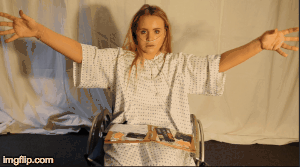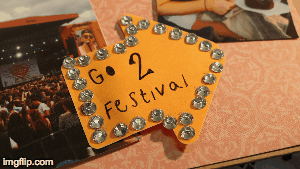Voice Over:
Today my partner and I wrote the voice over for our short film. After carefully watching our footage making sure that the scrip matched the footage we recorded it and added it to the film.
When creating the scrip for the voice over we took our protagonist Daisy's age into consideration and used appropriate language that our character would use for example 'well jell'.
After we had added the voice over to our film we gained feedback from our teacher:
- The voice-over is positioned in exactly the right place in the film opening because by the time the voice-over starts we already have a very clearly established idea of the central character.
- We can see her habits we know her gender her age group and we like to already for what we've seen of her and what she doesn't feel sympathetic towards her. It is also very clear from the voice-over at the start the name of the character what she's doing and the whole concept of scrap book of dreams is very clearly signaled so that the center of the short film as a rights of passage film, as a coming-of-age film, as a sort of vlog.
- She knows her audience and she's delivering directly to her audience so we have a great and intimacy in the kind of shots we see in the voice-over confirms that.
- There is a rather clever bit in the voice-over where the words ‘it was crazy’ are heard at the same time as the girl taking tablets. This could suggest it could deliberately mislead the audience. It could suggest that she's taking tablets at the festival because she's taking some kind of substance to keep her going. This is clever because it's not until the end that we find that the tablets are actually to control her life threatening illness.
- One of the very ingenious structural devices of the voice-over is that it highlights key visual codes. All of these are linked to the orange arrows with the Diamante trim which point to key moments in the teenagers life.
- In the voice over the words 'it all happened so fast' are then matched by real live-action so it goes from the looking at the scrapbook to live action of the young couple and their memories which is clever the choice of languages very careful for example rhetorical questions like you will never guess the use of colour, the use of colloquialisms and the whole teenage world is evoked think there's a word referring to jealousy for example contraction so the whole teenage world is evoked by the way that the voice-over is written ,the script is realistic.
- There needs to be some care taken about volume levels, which perhaps need to be tweaked.
- In addition I think the moment before the skinny-dipping I need to be perhaps a little break in the voice over there because it removes rather fast from one bit of voice-over to the next bit.
- Another good aspect is the fact that the voice-over knows when to let the visuals and music speak for itself and that does create a sense of poignancy and fun because we're sharing those moments are in a unhurried way.




